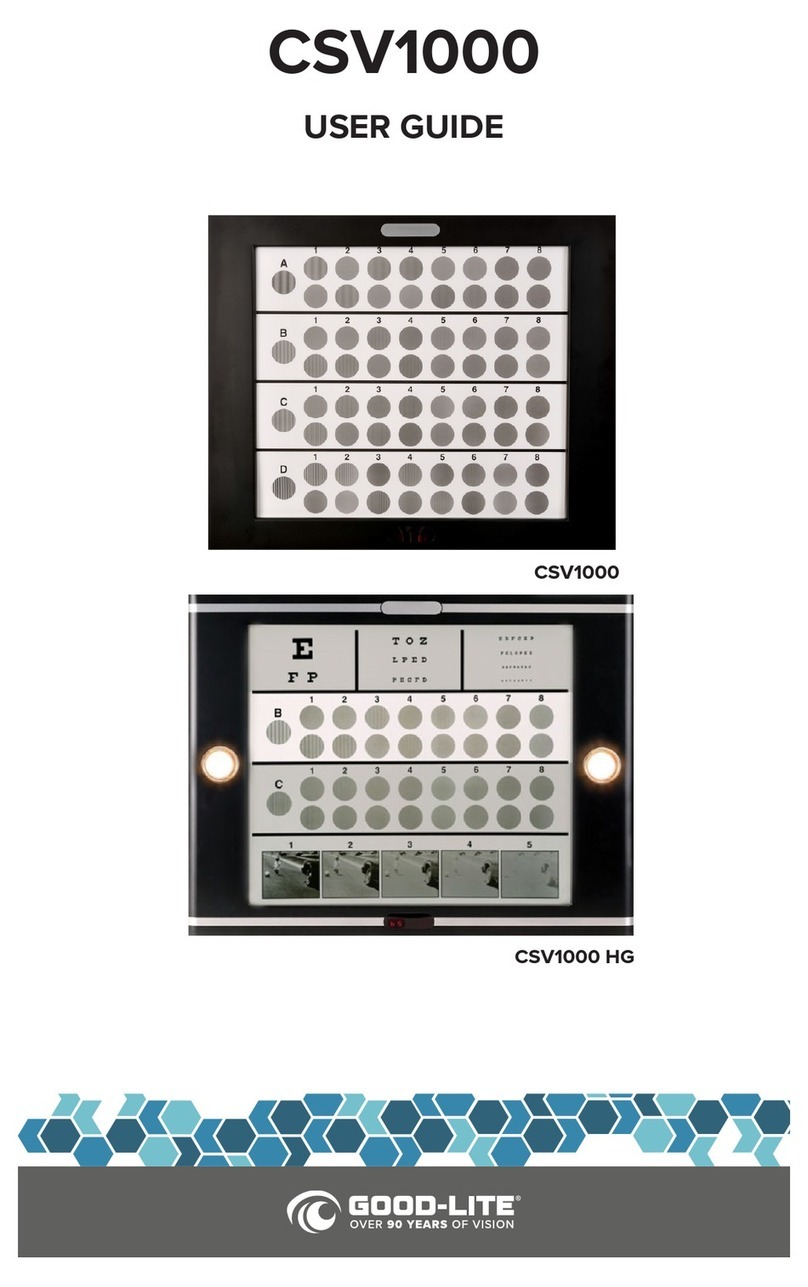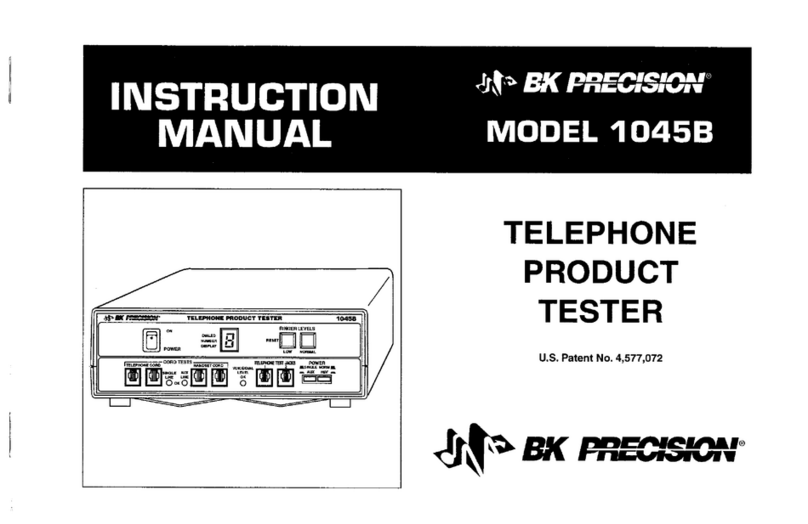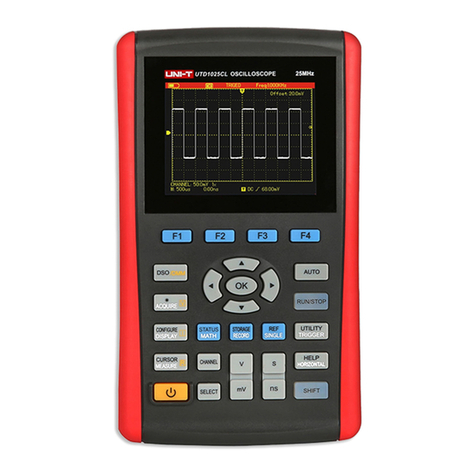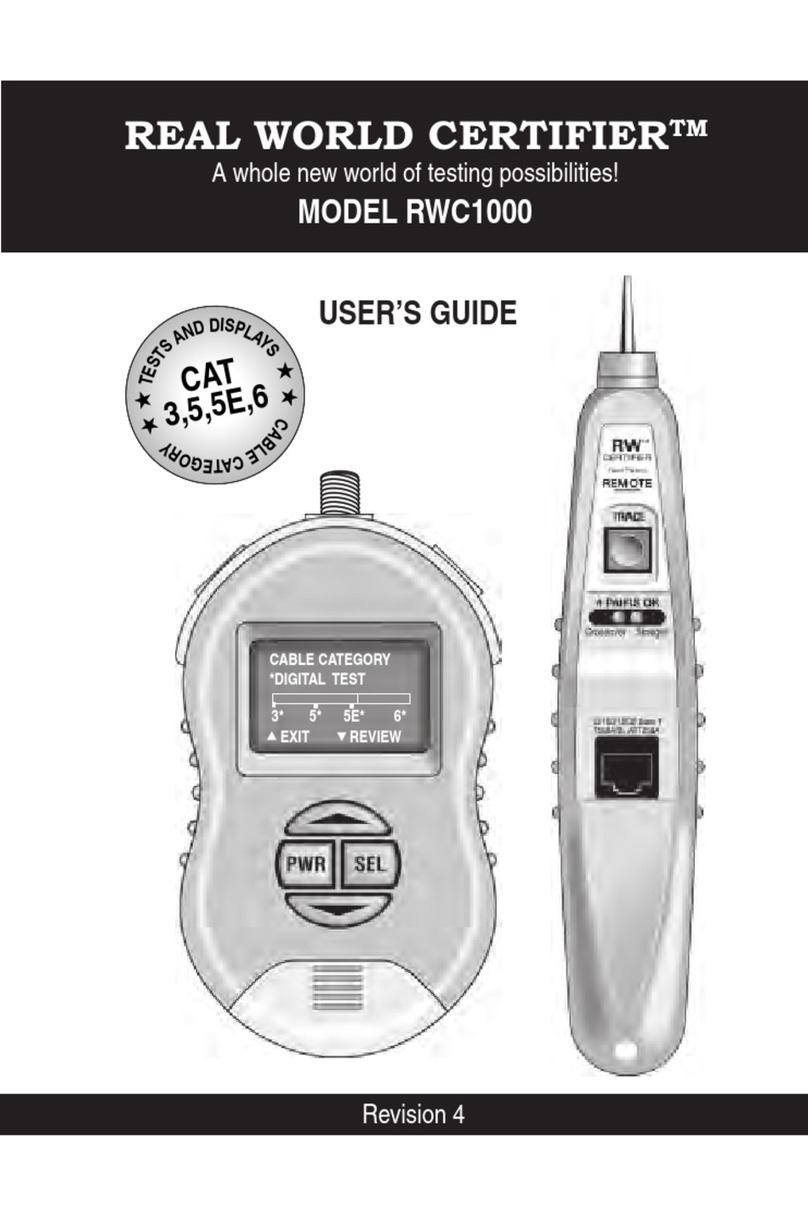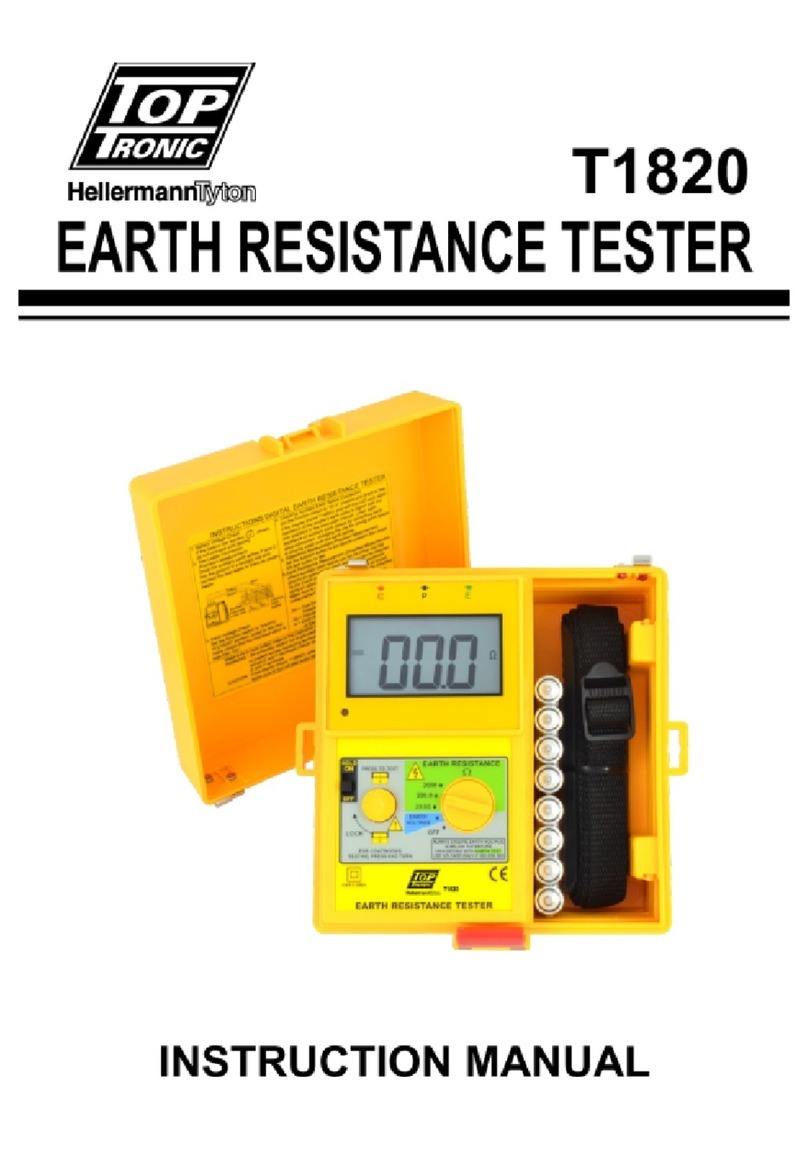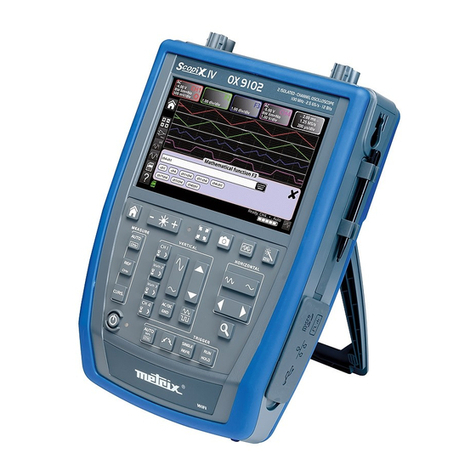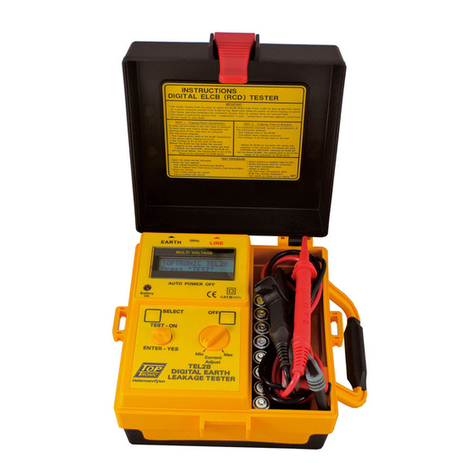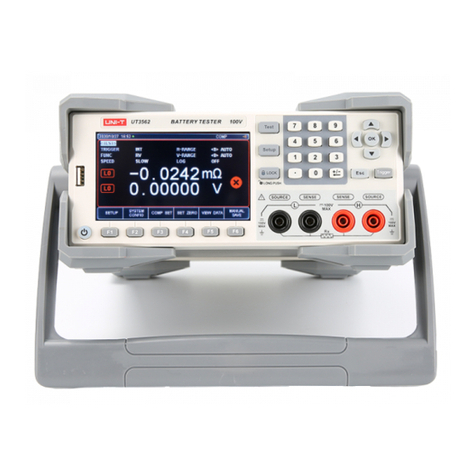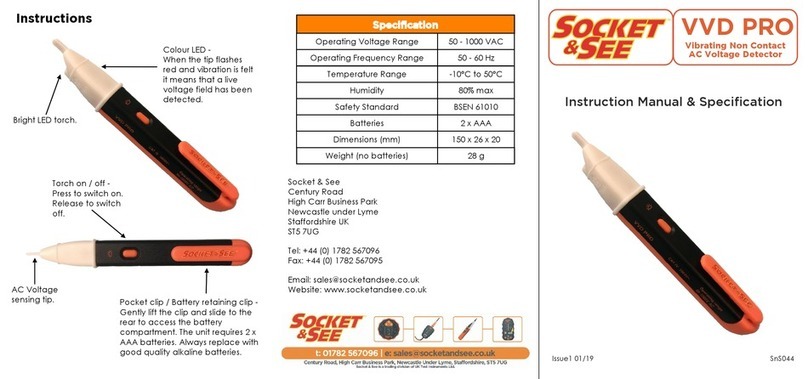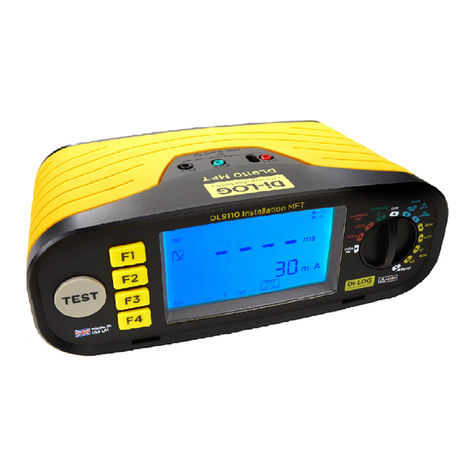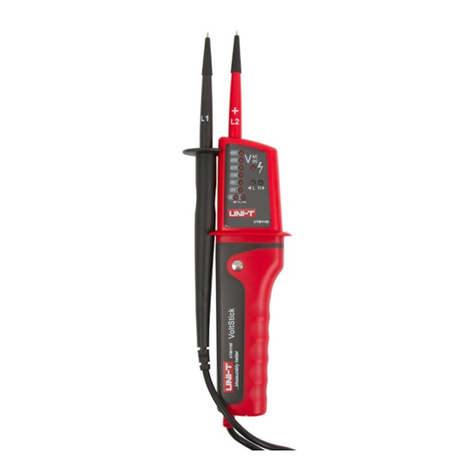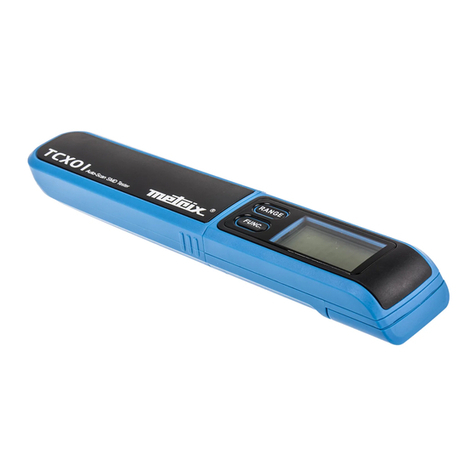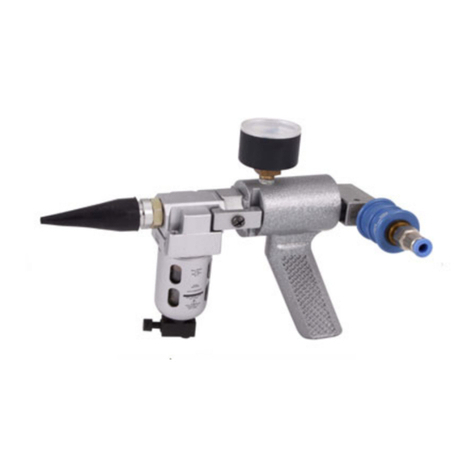Good-Lite Single LEA Symbols User manual

www.good-lite.com
1.800.362.3860
1.888.362.2576 Fax
www.good-lite.com 1
VIP Crowded Acuity Test
1.800.362.3860
1.888.362.2576 Fax
4
Crowded Single LEA Symbols®Visual Acuity Test at 5 feet
1155 Jansen Farm Drive
Elgin, IL 60123
Phone: 800-362-3860 Fax: 888-362-2576
Phone: 847-841-1145 Fax: 847-841-1149
www.good-lite.com
You may be also interesting in the following items:
Children's Vision Screening Occluders
Available as either opaque or frosted, these fun frames will
add excitement to any screening vision test. The set includes 2
occluder frames used to occlude each eye.
Stereopsis Acuity Tests
Designed to rapidly test for amblyopia and strabismus, these
stereo acuity tests are vailable with either fly or random dot. All
the tests use LEA Symbols®for testing children.
What Does the Screening Test Evaluate?
Visual acuity screening tests evaluate how well the child sees
small objects far away.
What You Need to Do the Test:
1. Two crowded Single Lea Symbols Visual Acuity test cards
(Disk cards). One card is for 3-year-olds and one card is
for 4- and 5-year-olds. At each age level, one side is for
testing the right eye and one side is for testing the left
eye so children don’t memorize the order of symbols. The
masking window displays one symbol at a time. The wheel
rotates from one symbol to the next. Each side of each card
contains 8 symbols (combinations of an apple, house, circle
and square) surrounded by crowding bars (lines around
each symbol).
2. Lap card which displays each of the 4 symbols (with
crowding bars).
3. Single, large symbols (one each of the apple, house, circle
and square) with crowding bars for pre-testing.
4. Baseline flip book for testing the right eye and left eye at 5
feet.
5. Two pair of occluder glasses (one for testing the right eye
and one for testing the left eye). Micropore tape or junior
size eye patches (e.g. Opticlude patches).
6. VIP illuminator with power supply and measuring cord.
7. Tissues to wipe the ear pieces and nose area of the
occluder glasses.
8. Antibacterial wipes to clean the lap card.
9. A sturdy table or chair to set the lamp stand on.
10. Chairs for the child and the screener.
11. Recording form and pen.
12. A small hand-held mirror (optional)
Getting Ready:
1. Place the lamp stand on a table or chair and turn the lamp
on.
2. Select the disk card and recording form
that are appropriate for the age of the
child to be tested.
3. Slide the disk card for the child’s age
into the slot on the lamp (right eye side
towards the child). (Assure that no
symbol is visible through the window.)
4. Use the measuring cord to position the
child’s chair so that the card is 5 feet
from the child’s eyes. Place one end
of the measuring cord in the notch on
the lower right side of the lamp stand (see right). The other
end of the cord marks the position of the child’s eyes. The
child should be looking straight ahead at the cards and the
cards should be at the same level/height as the child’s eyes.
If possible, mark this spot on the wall or floor with tape to
facilitate monitoring test distance during testing.
5. Record the screener’s name and child’s name and age
on the form.
Measuring Cord
Notch
Random Dot E Stereoacuity Test
Designed to rapidly test for amblyopia and strabismus in early
and non-readers and non-verbal children and adults. Choice of
dot size acuity (standard and low vision). Includes adult and new
child-friendly pediatric viewers with improved test frames.
Opaque Plastic Occluders
Set of 6 in gray.
Visit our website to see these products and much more.
www.good-lite.com

1.800.362.3860
1.888.362.2576 Fax www.good-lite.com
21.800.362.3860
1.888.362.2576 Fax
www.good-lite.com
VIP Crowded Acuity Test VIP Crowded Acuity Test
3
How You Do the Test:
1. If the child is wearing glasses, do not remove them.
2. Position the child 5 feet from the card.
3. Complete Pretesting to find out whether the child is able to
perform the test:
a. Place the Lea lap card on the child’s lap with the symbols
right side up as the child is looking at them. The lap card
should be flat on the child’s lap so the examiner can see the
symbol the child is pointing to.
b. Hold up one of the pretesting cards about 1.5 to 3 feet
from the child. Ask the child to name or point to (“touch”)
the symbol on the lap card that is the same. Continue this
procedure until all 4 symbols have been correctly named or
matched. Each symbol can be presented up to 2 times. If
the child cannot identify all of the symbols by matching or
naming, check the “Unable” box on the recording form and
stop testing. Continue testing if the child is able to match
or name all of the symbols.
c. Note: Other names for the symbols are acceptable as
long as the child uses them consistently. For example, the
child may call the apple a heart or the circle an “O” or the
rectangle a window. However, if the child ever starts using
a new name or there is ever any question about which
symbol the child is referring to, the child should be asked to
point to the symbol on the lap card.
4. Complete Testing at 5 Feet: Right eye disk
a. Occlude the left eye:
i. Place the occluder glasses on the child so that the left
eye is covered. If you have difficulty getting the child to
wear the occluder glasses, try letting the child admire
himself/herself with the glasses on using a hand-held
mirror.
ii. If the child is unable or refuses to wear the occluder
glasses, attempt to cover the left eye with micropore
tape (make sure to protect the eye from the adhesive on
the tape) or an eye patch.
iii. If the child refuses to wear the occluder glasses,
micropore tape, or eye patch, have a helper cover the
child’s eye with the palm of his/her hand. The examiner
must monitor the child carefully to make sure he/she is
not peeking and that the palm is not pressing against
the child’s eye. Covering the eye with fingers is not
allowed because peeking is too easy with only fingers
in front of the eye. If the child refuses to allow a helper
to cover the eye, the child can cover his/her own eye
with the palm of his/her hand.
b. Check the position of the child for testing. The child’s eyes
will need to be at the same height as the cards.
c. Begin Age-specific visual acuity testing
i. Turn the wheel until the first symbol (numbered 3R1
for 3-year-olds or 4R1 for 4- and 5-year-olds) is
in the window. Have the child name or match the
corresponding Lea symbol. After the child gives his/her
response, rotate the wheel clockwise to the next
symbol (numbered 3R2 for 3-year-olds or 4R2 for 4- and
5-year-olds).
ii. Whenever the child gets a symbol wrong, place an ‘X’ on
the corresponding symbol on the recording form.
iii. If the child misses 1 or none of the first 4 symbols (R1,
R2, R3, and R4) continue testing successive symbols
(R5-R8) until a child gets 2 symbols wrong on a line of
symbols on the recording form or completes testing on
all symbols.
1. If the child completes all the symbols without getting
any X’s, check the box on the recording form stating
that all symbols were identified correctly.
iv. If the child misses 2 or more of the first 4 symbols,
complete the baseline flip book testing as follows:
1. Remove the disk card from the slot on the lamp
stand.
2. Place the baseline flip book on the front ledge of the
lamp stand.
3. Have the child name or match each symbol for the
right eye. If the child incorrectly identifies a symbol,
put an X on the corresponding symbol on the
recording form.
4. If the child gets 2 or more wrong (2 or more X’s on
the line on the recording form), STOP and test the left
eye (See Step 5 below).
5. If the child correctly identifies all the symbols or
only gets 1 of the symbols on the baseline flip book
wrong (1 X on the line on the recording form), put
the disk card for the child’s age back into the slot
on the lamp (right eye disk side towards the child).
Turn the wheel until the first symbol (numbered 3R1
for 3-year-olds or 4R1 for 4- and 5-year-olds) is
in the window. Have the child name or match the
corresponding Lea symbol. Continue testing the right
eye with successive symbols until the child gets 2 or
more wrong on a line (2 or more X’s on the line on the
recording form).
5. Testing at 5 Feet: Left eye
a. Occlude the right eye and flip the visual acuity testing card
(disk) over so that the left eye side of the card (disk) is
facing the child.
b. Begin age-specific acuity testing for the left eye (as in step
4c, above) beginning with the first symbol for the left eye
(numbered 3L1 for 3-year-olds or 4L1 for 4- and 5-year-
olds).
6. Wipe the ear pieces and nose area of the occluder glasses
with a tissue after each child is tested.
7. Clean the lap card with an antibacterial wipe as needed.
8. When you are finished testing, the testing materials can be stored
in the storage compartment on the back of the lamp stand.
What You Tell the Child:
1. Encourage the child by saying “Good job!” even if the child
names or matches the symbols incorrectly.
2. Urge the child to keep naming or matching the symbols even if
the child must guess.
3. Remind the child to stay in the same position and look straight
ahead at the cards.
Remember!:
1. Keep the child’s attention focused on the task.
2. Maintain the appropriate distance during the test.
3. Make sure the child does not peek.
4. Continue to the next line only if the child names or matches at
least three of the four symbols on a line.
Interpretation and Recording of Results:
1. Check the “PASS” box at the bottom of the recording sheet if
a child correctly names or matches at least three of four of the
smallest age-specific LEA Symbols (symbols 5-8). (For 3-year-
olds, the smallest symbols are equivalent to 20/50, and for
4- and 5-year-olds, they are equivalent to 20/40).
2. Check the “REFER” box at the bottom of the recording sheet
if a child is:
a. Unable to match the LEA Symbols at 3 feet (pretesting step)
b. Uncooperative for testing
c. Refuses to wear the glasses (or occlusion by the other
means discussed)
d. Unable to match at least 3 of 4 symbols on any line with
either eye
• Baseline Card (if tested)
• LEA Symbols 1 through 4
• LEA Symbols 5 through 8 (smallest age specific line)
Passing Criteria
Child's Age Passing Criterion*
3-year-olds 5/12.5 Line (20/50)
4-year-olds 5/10 Line (20/40)
5-year-olds 5/10 Line (20/40)
* Child must correctly name or match at least three of four
symbols of this size (which is the smallest line of age-specific
Lea Symbols (symbols 5-8))
4L 4
4L 3
4L 2
4L 1
4L 8
4L 7
4L 6
4L 5
4YO LEFT
#300502
developed by Lea Hyvärinen, MD
Phone: 847-841-1145 Fax: 847-841-1149
Phone: 800-362-3860 Fax: 888-362-2576
www.good-lite.com
(00%-*5&
The Quality Always Shines Through
4- and 5-Year-Olds
Left Eye
Produced exclusively by:
As used in the Vision In Preschoolers (VIP) Study (sponsored
by the National Eye Institute of the National Institutes of Health
of the Department of Health and Human Services)
Part #300504
For Testing at
1.5 Meters (5 Feet)
LEA Symbol
Symbol Number

1.800.362.3860
1.888.362.2576 Fax www.good-lite.com
21.800.362.3860
1.888.362.2576 Fax
www.good-lite.com
VIP Crowded Acuity Test VIP Crowded Acuity Test
3
How You Do the Test:
1. If the child is wearing glasses, do not remove them.
2. Position the child 5 feet from the card.
3. Complete Pretesting to find out whether the child is able to
perform the test:
a. Place the Lea lap card on the child’s lap with the symbols
right side up as the child is looking at them. The lap card
should be flat on the child’s lap so the examiner can see the
symbol the child is pointing to.
b. Hold up one of the pretesting cards about 1.5 to 3 feet
from the child. Ask the child to name or point to (“touch”)
the symbol on the lap card that is the same. Continue this
procedure until all 4 symbols have been correctly named or
matched. Each symbol can be presented up to 2 times. If
the child cannot identify all of the symbols by matching or
naming, check the “Unable” box on the recording form and
stop testing. Continue testing if the child is able to match
or name all of the symbols.
c. Note: Other names for the symbols are acceptable as
long as the child uses them consistently. For example, the
child may call the apple a heart or the circle an “O” or the
rectangle a window. However, if the child ever starts using
a new name or there is ever any question about which
symbol the child is referring to, the child should be asked to
point to the symbol on the lap card.
4. Complete Testing at 5 Feet: Right eye disk
a. Occlude the left eye:
i. Place the occluder glasses on the child so that the left
eye is covered. If you have difficulty getting the child to
wear the occluder glasses, try letting the child admire
himself/herself with the glasses on using a hand-held
mirror.
ii. If the child is unable or refuses to wear the occluder
glasses, attempt to cover the left eye with micropore
tape (make sure to protect the eye from the adhesive on
the tape) or an eye patch.
iii. If the child refuses to wear the occluder glasses,
micropore tape, or eye patch, have a helper cover the
child’s eye with the palm of his/her hand. The examiner
must monitor the child carefully to make sure he/she is
not peeking and that the palm is not pressing against
the child’s eye. Covering the eye with fingers is not
allowed because peeking is too easy with only fingers
in front of the eye. If the child refuses to allow a helper
to cover the eye, the child can cover his/her own eye
with the palm of his/her hand.
b. Check the position of the child for testing. The child’s eyes
will need to be at the same height as the cards.
c. Begin Age-specific visual acuity testing
i. Turn the wheel until the first symbol (numbered 3R1
for 3-year-olds or 4R1 for 4- and 5-year-olds) is
in the window. Have the child name or match the
corresponding Lea symbol. After the child gives his/her
response, rotate the wheel clockwise to the next
symbol (numbered 3R2 for 3-year-olds or 4R2 for 4- and
5-year-olds).
ii. Whenever the child gets a symbol wrong, place an ‘X’ on
the corresponding symbol on the recording form.
iii. If the child misses 1 or none of the first 4 symbols (R1,
R2, R3, and R4) continue testing successive symbols
(R5-R8) until a child gets 2 symbols wrong on a line of
symbols on the recording form or completes testing on
all symbols.
1. If the child completes all the symbols without getting
any X’s, check the box on the recording form stating
that all symbols were identified correctly.
iv. If the child misses 2 or more of the first 4 symbols,
complete the baseline flip book testing as follows:
1. Remove the disk card from the slot on the lamp
stand.
2. Place the baseline flip book on the front ledge of the
lamp stand.
3. Have the child name or match each symbol for the
right eye. If the child incorrectly identifies a symbol,
put an X on the corresponding symbol on the
recording form.
4. If the child gets 2 or more wrong (2 or more X’s on
the line on the recording form), STOP and test the left
eye (See Step 5 below).
5. If the child correctly identifies all the symbols or
only gets 1 of the symbols on the baseline flip book
wrong (1 X on the line on the recording form), put
the disk card for the child’s age back into the slot
on the lamp (right eye disk side towards the child).
Turn the wheel until the first symbol (numbered 3R1
for 3-year-olds or 4R1 for 4- and 5-year-olds) is
in the window. Have the child name or match the
corresponding Lea symbol. Continue testing the right
eye with successive symbols until the child gets 2 or
more wrong on a line (2 or more X’s on the line on the
recording form).
5. Testing at 5 Feet: Left eye
a. Occlude the right eye and flip the visual acuity testing card
(disk) over so that the left eye side of the card (disk) is
facing the child.
b. Begin age-specific acuity testing for the left eye (as in step
4c, above) beginning with the first symbol for the left eye
(numbered 3L1 for 3-year-olds or 4L1 for 4- and 5-year-
olds).
6. Wipe the ear pieces and nose area of the occluder glasses
with a tissue after each child is tested.
7. Clean the lap card with an antibacterial wipe as needed.
8. When you are finished testing, the testing materials can be stored
in the storage compartment on the back of the lamp stand.
What You Tell the Child:
1. Encourage the child by saying “Good job!” even if the child
names or matches the symbols incorrectly.
2. Urge the child to keep naming or matching the symbols even if
the child must guess.
3. Remind the child to stay in the same position and look straight
ahead at the cards.
Remember!:
1. Keep the child’s attention focused on the task.
2. Maintain the appropriate distance during the test.
3. Make sure the child does not peek.
4. Continue to the next line only if the child names or matches at
least three of the four symbols on a line.
Interpretation and Recording of Results:
1. Check the “PASS” box at the bottom of the recording sheet if
a child correctly names or matches at least three of four of the
smallest age-specific LEA Symbols (symbols 5-8). (For 3-year-
olds, the smallest symbols are equivalent to 20/50, and for
4- and 5-year-olds, they are equivalent to 20/40).
2. Check the “REFER” box at the bottom of the recording sheet
if a child is:
a. Unable to match the LEA Symbols at 3 feet (pretesting step)
b. Uncooperative for testing
c. Refuses to wear the glasses (or occlusion by the other
means discussed)
d. Unable to match at least 3 of 4 symbols on any line with
either eye
• Baseline Card (if tested)
• LEA Symbols 1 through 4
• LEA Symbols 5 through 8 (smallest age specific line)
Passing Criteria
Child's Age Passing Criterion*
3-year-olds 5/12.5 Line (20/50)
4-year-olds 5/10 Line (20/40)
5-year-olds 5/10 Line (20/40)
* Child must correctly name or match at least three of four
symbols of this size (which is the smallest line of age-specific
Lea Symbols (symbols 5-8))
4L 4
4L 3
4L 2
4L 1
4L 8
4L 7
4L 6
4L 5
4YO LEFT
#300502
developed by Lea Hyvärinen, MD
Phone: 847-841-1145 Fax: 847-841-1149
Phone: 800-362-3860 Fax: 888-362-2576
www.good-lite.com
(00%-*5&
The Quality Always Shines Through
4- and 5-Year-Olds
Left Eye
Produced exclusively by:
As used in the Vision In Preschoolers (VIP) Study (sponsored
by the National Eye Institute of the National Institutes of Health
of the Department of Health and Human Services)
Part #300504
For Testing at
1.5 Meters (5 Feet)
LEA Symbol
Symbol Number

3-year-old Children
Lea 5' Visual Acuity Recording Form
1. Name: ___________________________________ Age:______
2. Screener: ________________________________
3. Check unable box if child cannot complete Lea Pretest: Unable 1STOP!
Baseline Flip Book Right Eye
0 or 1 X
✔ check here if child
correctly identified all cards
presented with right eye
3R 1 3R 2 3R 3 3R 4
3R 5 3R 6 3R 7 3R 8
3L 1 3L 2 3L 3 3L 4
3L 5 3L 6 3L 7 3L 8
Phone: 847-841-1145 Fax: 847-841-1149
Phone: 800-362-3860 Fax: 888-362-2576
www.good-lite.com
GOOD-LITE
The Quality Always Shines Through
Produced exclusively by: As used in the Vision In Preschoolers (VIP) Study (sponsored
by the National Eye Institute of the National Institutes of Health
of the Department of Health and Human Services)
2 or more X’s
3R 5 3R 6 3R 7 3R 8
Right Eye Disk
If 2 or
more X’s
STOP
If 2 or
more X’s
STOP
4. Right Eye Disk
Start at 3R1
Right Eye Disk
3R 1 3R 2 3R 3 3R 4
Right Eye Disk
Baseline Flip Book Left Eye
0 or 1 X 2 or more X’s
Left Eye Disk
If 2 or
more X’s
STOP
If 2 or
more X’s
STOP
5. Left Eye Disk
Start at 3L1
Left Eye Disk
Left Eye Disk
3L 1 3L 2 3L 3 3L 4
3L 5 3L 6 3L 7 3L 8
6. PASS
REFER
✔ check here if child
correctly identified all cards
presented with left eye

4-5-year-old Children
Lea 5' Visual Acuity Recording Form
1. Name: ___________________________________ Age:______
2. Screener: ________________________________
3. Check unable box if child cannot complete Lea Pretest: Unable 1STOP!
Baseline Flip Book Right Eye
0 or 1 X
✔ check here if child
correctly identified all cards
presented with right eye
Phone: 847-841-1145 Fax: 847-841-1149
Phone: 800-362-3860 Fax: 888-362-2576
www.good-lite.com
GOOD-LITE
The Quality Always Shines Through
Produced exclusively by: As used in the Vision In Preschoolers (VIP) Study (sponsored
by the National Eye Institute of the National Institutes of Health
of the Department of Health and Human Services)
2 or more X’s
Right Eye Disk
If 2 or
more X’s
STOP
If 2 or
more X’s
STOP
4. Right Eye Disk
Start at 4R1
Right Eye Disk
Right Eye Disk
Baseline Flip Book Left Eye
0 or 1 X 2 or more X’s
Left Eye Disk
If 2 or
more X’s
STOP
If 2 or
more X’s
STOP
5. Left Eye Disk
Start at 4L1
Left Eye Disk
6. PASS
REFER
✔ check here if child
correctly identified all cards
presented with left eye
4R 1 4R 3
4R 2
4R 5
4R 5 4R 7
4L 1 4L 2 4L 3
4L 6 4L 7
4R 4
4R 6 4R 8
4L 4
4L 5 4L 8
4R 1 4R 3
4R 2 4R 4
4R 5
4R 5 4R 7
4R 6 4R 8
4L 1 4L 2 4L 3 4L 4
4L 6 4L 7
4L 5 4L 8

www.good-lite.com
1.800.362.3860
1.888.362.2576 Fax
www.good-lite.com 1
VIP Crowded Acuity Test
1.800.362.3860
1.888.362.2576 Fax
4
Crowded Single LEA Symbols®Visual Acuity Test at 5 feet
1155 Jansen Farm Drive
Elgin, IL 60123
Phone: 800-362-3860 Fax: 888-362-2576
Phone: 847-841-1145 Fax: 847-841-1149
www.good-lite.com
You may be also interesting in the following items:
Children's Vision Screening Occluders
Available as either opaque or frosted, these fun frames will
add excitement to any screening vision test. The set includes 2
occluder frames used to occlude each eye.
Stereopsis Acuity Tests
Designed to rapidly test for amblyopia and strabismus, these
stereo acuity tests are vailable with either fly or random dot. All
the tests use LEA Symbols®for testing children.
What Does the Screening Test Evaluate?
Visual acuity screening tests evaluate how well the child sees
small objects far away.
What You Need to Do the Test:
1. Two crowded Single Lea Symbols Visual Acuity test cards
(Disk cards). One card is for 3-year-olds and one card is
for 4- and 5-year-olds. At each age level, one side is for
testing the right eye and one side is for testing the left
eye so children don’t memorize the order of symbols. The
masking window displays one symbol at a time. The wheel
rotates from one symbol to the next. Each side of each card
contains 8 symbols (combinations of an apple, house, circle
and square) surrounded by crowding bars (lines around
each symbol).
2. Lap card which displays each of the 4 symbols (with
crowding bars).
3. Single, large symbols (one each of the apple, house, circle
and square) with crowding bars for pre-testing.
4. Baseline flip book for testing the right eye and left eye at 5
feet.
5. Two pair of occluder glasses (one for testing the right eye
and one for testing the left eye). Micropore tape or junior
size eye patches (e.g. Opticlude patches).
6. VIP illuminator with power supply and measuring cord.
7. Tissues to wipe the ear pieces and nose area of the
occluder glasses.
8. Antibacterial wipes to clean the lap card.
9. A sturdy table or chair to set the lamp stand on.
10. Chairs for the child and the screener.
11. Recording form and pen.
12. A small hand-held mirror (optional)
Getting Ready:
1. Place the lamp stand on a table or chair and turn the lamp
on.
2. Select the disk card and recording form
that are appropriate for the age of the
child to be tested.
3. Slide the disk card for the child’s age
into the slot on the lamp (right eye side
towards the child). (Assure that no
symbol is visible through the window.)
4. Use the measuring cord to position the
child’s chair so that the card is 5 feet
from the child’s eyes. Place one end
of the measuring cord in the notch on
the lower right side of the lamp stand (see right). The other
end of the cord marks the position of the child’s eyes. The
child should be looking straight ahead at the cards and the
cards should be at the same level/height as the child’s eyes.
If possible, mark this spot on the wall or floor with tape to
facilitate monitoring test distance during testing.
5. Record the screener’s name and child’s name and age
on the form.
Measuring Cord
Notch
Random Dot E Stereoacuity Test
Designed to rapidly test for amblyopia and strabismus in early
and non-readers and non-verbal children and adults. Choice of
dot size acuity (standard and low vision). Includes adult and new
child-friendly pediatric viewers with improved test frames.
Opaque Plastic Occluders
Set of 6 in gray.
Visit our website to see these products and much more.
www.good-lite.com
Other Good-Lite Test Equipment manuals
Popular Test Equipment manuals by other brands
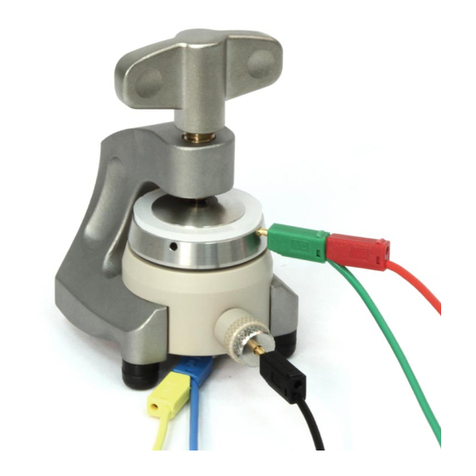
EL-CELL
EL-CELL ECC-Aqu user manual

Master cool
Master cool 69200-220 operating instructions
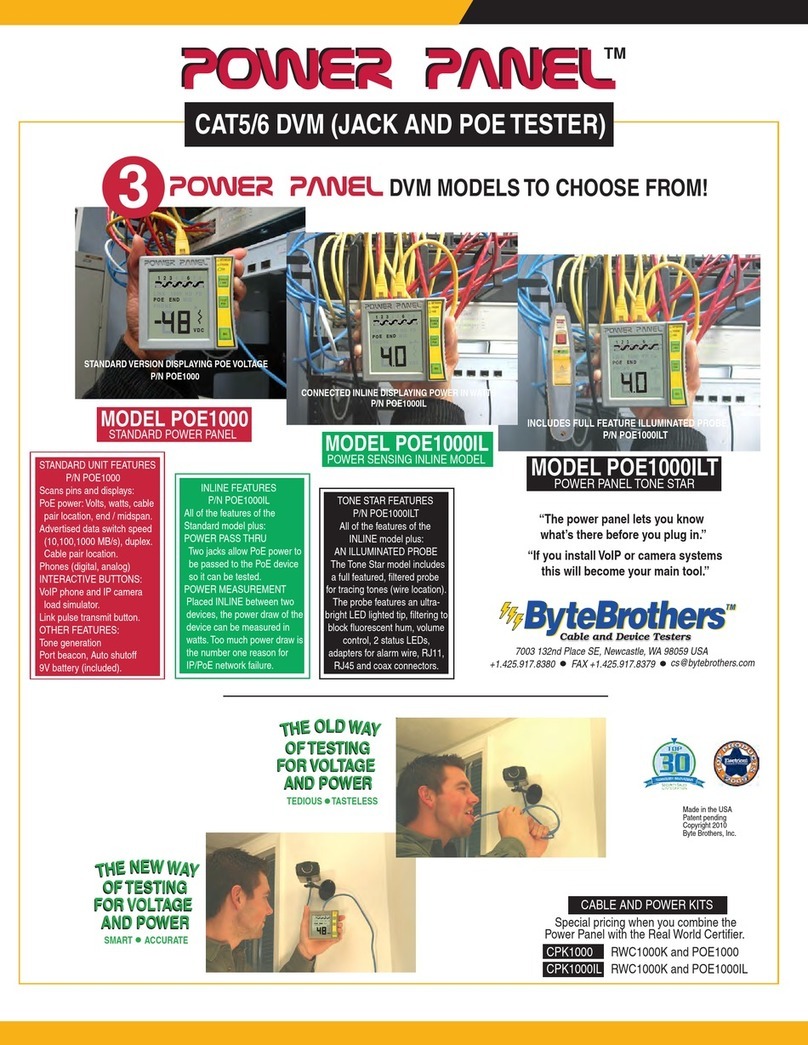
Byte Brothers
Byte Brothers POWER PANEL quick start guide

IKALOGIC
IKALOGIC MT25C Datasheet and User Manual
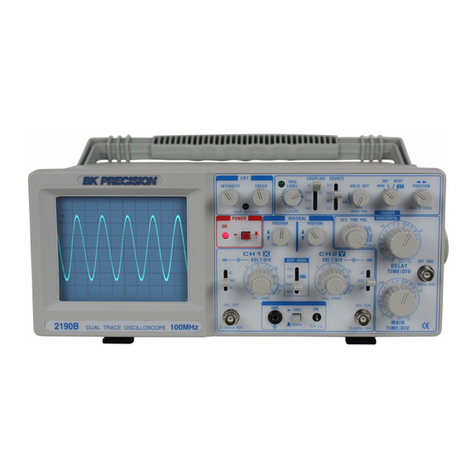
B+K precision
B+K precision 2190B instruction manual

Kyoritsu Electrical Instruments Works, Ltd.
Kyoritsu Electrical Instruments Works, Ltd. 3165 instruction manual
